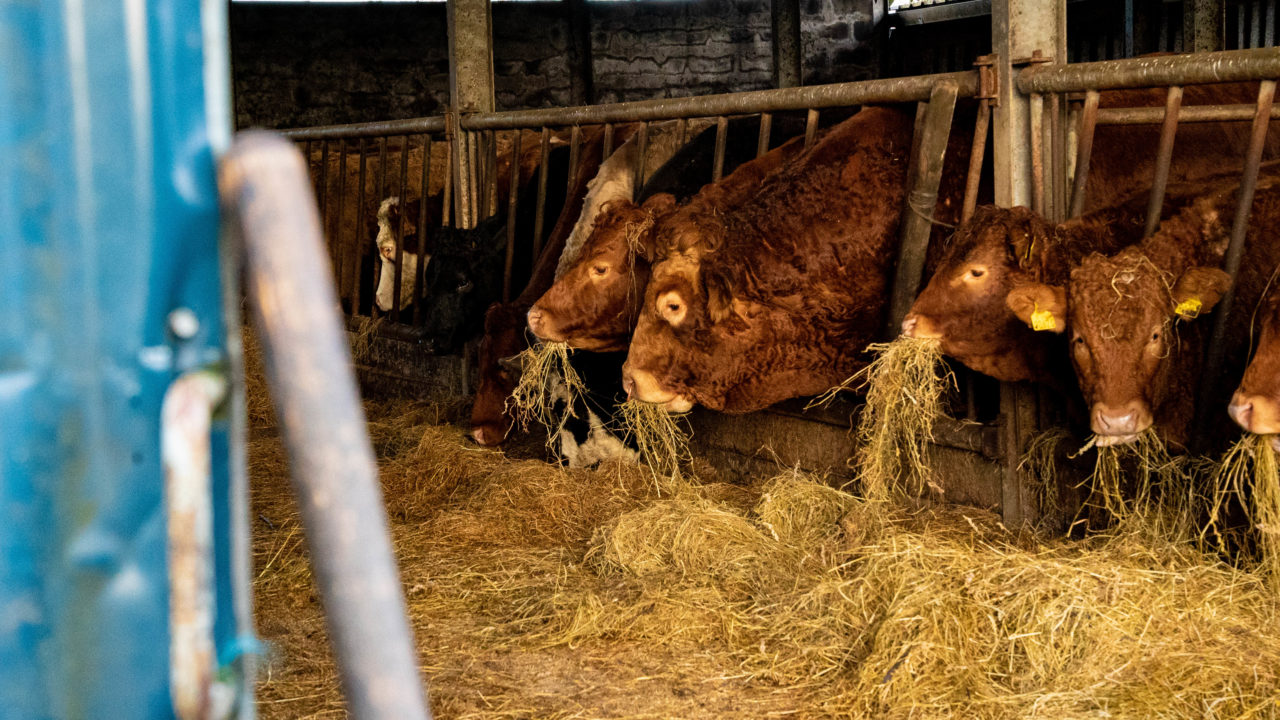Production of beef in the EU is set to continue declining this year, according to the European Commission’s short-term outlook report for EU agricultural markets.
The report envisages a slight decrease in beef production across the EU by 0.9% in 2022, which it says will be caused by “continuing structural adjustments in the beef and milk sector”.
As well as that, the report says that high input prices for beef farmers, notably for feed, might lead to some additional slaughterings and to lower carcass weight, especially in intensive beef farms where feed costs will weigh more on farm profitability.
The EU’s consumption of beef is likely to continue declining, with a 0.9% per capita decrease expected in 2022, in the context of higher meat and food prices that will weigh on the appeal of meat in general.
In 2022, EU beef exports are expected to grow only slightly by 1%, constrained by limited domestic availability and despite the relatively high prices at global level.
A continuing decline of live exports is expected as well this year due to the cessation of trade with Russia.
EU imports of beef are expected to recover by 5% due to the reopening of foodservices in many EU countries, having declined by 7.3% last year.
The report provides an outlook for most agri-food sectors, including pigmeat, poultry and sheepmeat.
Pigmeat
For pigmeat, the outlook notes that EU pig prices have increased somewhat as of March just gone. However, it notes that it is uncertain whether this trend will continue and, in any event, the increase is not expected to be sufficient to compensate for the losses of previous months and the higher input costs which are expected to last.
As a result of this, EU pigmeat production is expected to decrease by 3% this year. The production decrease in 2022 is expected to be most notable in Germany, Poland and Romania because of African Swine Fever (ASF).
Production in Denmark is expected to remain stable, while it may increase in Spa-n. Ireland does not get a specific mention in this regard in the report.
Pigs could be sent to slaughter younger and lighter than usual this year to save on feed costs.
Reduced availability of pigmeat could see consumption in the EU fall by 3.1% in 2022.
Exports of pigmeat out of the EU are expected to fall by 2.2%, due to a combination of ASF and the war situation in eastern Europe, which has seen an end to trade with Russia, Ukraine and Belarus.
EU imports of pigmeat, however, are set to increase by 9.1% this year after falling significantly in 2021. The expected increase is partially a result of Brexit-related logistical issues in trade with the UK gradually being resolved.
Poultry
On the poultry side of things, the outlook report notes that the average EU price for broilers has increased since the start of the year, which “compensates at least partially” the exceptionally high input costs.
However, those costs are also expected to continue increasing in the coming months due to tensions on the energy and grain markets as well as the war in Ukraine.
This, combined with outbreaks of avian influenza (bird flu), is set to lead to a reduction in production in the Netherlands. On the flip side, production will stabilise in Spain and Poland due to good prices and sustained demand.
Countries that have been less impacted by bird flu may see production increase moderately this year. Overall, EU poultry production is expected to increase very slightly by 0.5% in 2022. This would still be below pre-Covid-19 pandemic levels.
EU consumption of poultry produce is expected to return to 2019 levels in 2022.
An easing of trade issues with the UK should allow EU exporters of poultry to return to pre-Brexit levels.
This, along with increased exports to Switzerland and some overseas destinations could compensate the reduction of exports to traditional markets which are applying bird flu related bans, such as the Philippines, South Africa and Saudi Arabia, while exports to Ukraine are also interrupted.
Overall EU poultry exports are expected to increase by 2.6% in 2022, after a 9% drop in 2021.
EU imports of poultry are expected to increase slightly by 1.5% this year, with foodservice expected to gradually reach pre-Covid-19 levels and additional imports from the UK, Brazil, Thailand and China potentially making up for the loss of imports from Ukraine.
The report takes sheepmeat and goatmeat together, and notes that the current combined size of the sheep and goat flock in the EU is at its lowest level since 1990.
Sheepmeat and goatmeat
Sheepmeat and goatmeat production relying on purchased feed is expected to suffer from the current situation of high feed prices, which may lead to additional slaughterings and lighter slaughter weights.
On the other hand, the substantial reduction of the EU’s sheep and goat flock will hamper production, despite favourable prices.
Overall, a decrease in production of 2% year-on-year is expected in 2022, which is therefore likely to contribute to a sustained high level of domestic prices.
Low domestics supply is expected to lead to a reduction of EU per capita consumption of sheepmeat and goatmeat by 1.8%.
A shortage of domestic supply; continuing trade frictions with the UK; and relatively high EU prices will limit the recovery of sheepmeat and goatmeat exports, which fell by 19% in 2021. A relatively modest 4% increase is expected this year.
Exports of live animals are set to decline in 2022 due to limited domestic supply.
EU imports of sheepmeat specifically will only increase by 2% – following an 18% decrease last year – due to shipping costs and more attractive markets in Asia. This assumes no change in the current trade situation with the UK.
